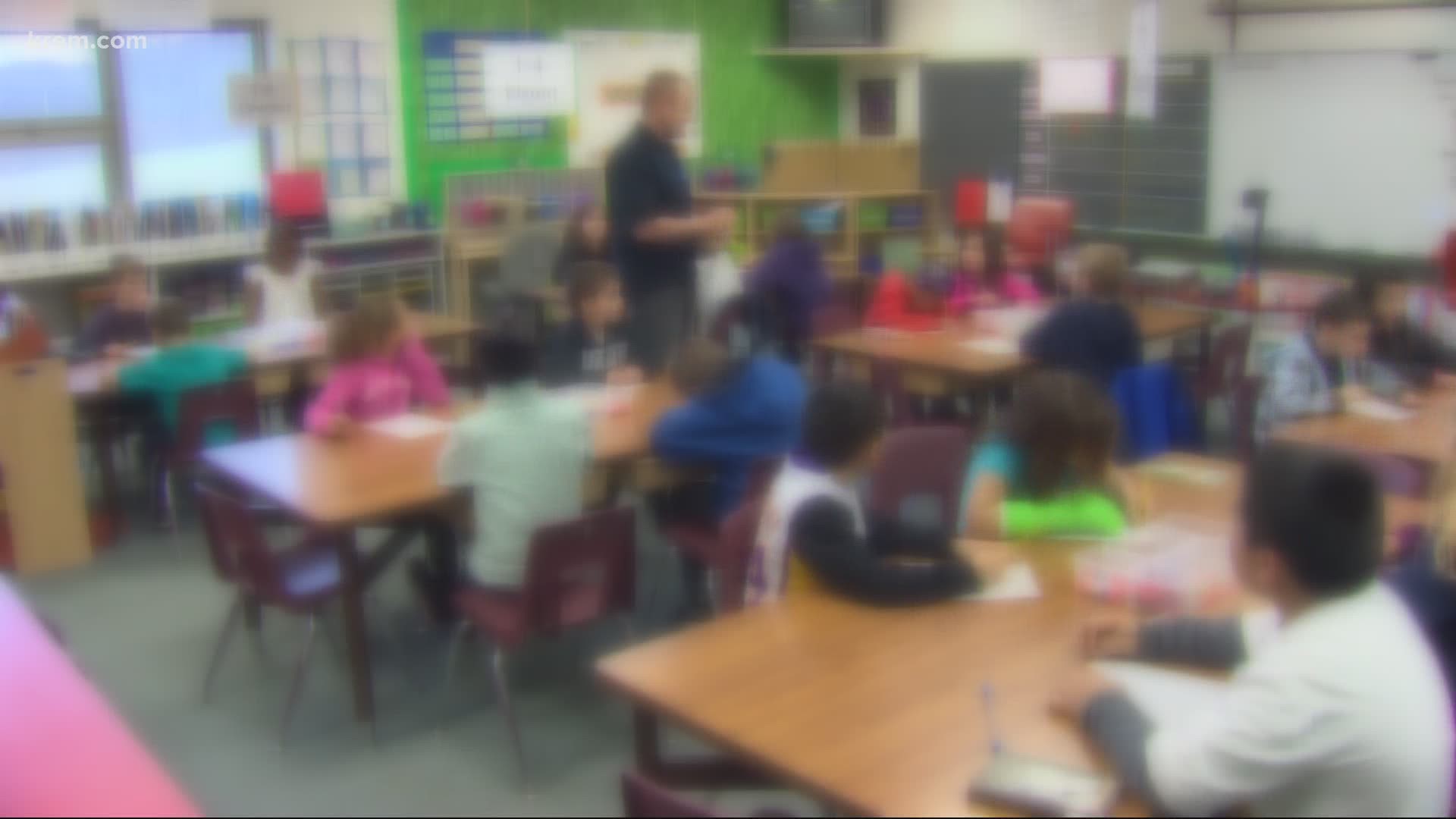BOISE, Idaho — As Idaho releases new guidelines outlining what schools might look like in the fall, Gov. Brad Little is emphasizing the importance of students returning to their classrooms.
Governor Brad Little’s Office and the Idaho Board of Education released a framework on Wednesday to provide local school districts with guidance about the safe reopening of schools for the 2020-2021 school year.
It is expected that students will return to school buildings. The guidelines are just expectations and not a binding legal document. They do not answer all of the aspects of reopening schools.
On Thursday, Gov. Little said "the expectation is that schools will not be closed for extended periods of time."
"Before coronavirus, too many Idaho students faced a significant achievement gap and ongoing risks to their mental and social wellbeing. It’s imperative that students return to their classrooms and interact directly with their teachers and classmates at the end of the summer,” he said.
Idaho has also approved $30 million to address the digital divide in schools and help with blended learning, Little added.
State leaders say the guidelines do not include a mandate on the wearing of masks because that is a decision made at the local level. The guidance does say, though, that parents need to keep their children home from school for at least several days if they have a fever.
Until a vaccine or better treatment option is created, Idaho schools will need to prepare different types of learning methods, according to the guidelines. This includes traditional in-person classes, a mix of in-person and online classes and an extended distance learning plan.
The framework is broken down into three categories. The first is called the "preparedness phase." This is when there is no community transmission of the virus. In this phase, school buildings will open for in person classes but everyone still has to practice social distancing and schools with increase their sanitation efforts. Masks will be recommended, but not required.
The second phase will be in place when there’s minimal to moderate community transmission. During this stage, school buildings may open. They can choose to stagger schedules to create more physical distancing. Masks will be recommended when practical, according to the guidelines.
When there’s still substantial community spread, schools will be in category three. The state outlines that this is when there’s a large-scale community transmission and health care staffing is significantly impacted. If hospitals are nearing or exceeding capacity, schools would then look to short-term or extended online learning.
The guidelines also say schools should be prepared for a confirmed case of coronavirus in the building. Each school may require different procedures based on the case and instructions from local public health officials.
Here are the steps each school should consider following a reported coronavirus case:
- If an infected person enters a building, schools may need to implement short-term closure procedures regardless of the level of community spread.
- Begin identifying anyone who may have been in close contact with a confirmed or suspected COVID-19 case. Close contact is less than six feet for more than 15 minutes.
- While face coverings are believed to reduce the risk, they are not considered as protective for identifying close contacts.
- Follow local public health guidance for course of action. Recommendations will be given on a case-by-case basis, and could include: Excluding positive, suspected, and close contacts from school as they follow isolation or self-quarantine instructions until they can safely return.
- A short-term dismissal of students and most staff for 1-2 days.
- Extended school dismissal.
- Communicate with staff, parents, and students regarding dismissal decisions and possible COVID-19 exposure.
- Clean and disinfect thoroughly.
- Reinstate strategies to continue education and related supports to students as needed.

